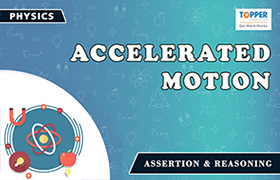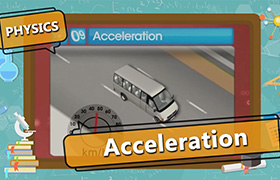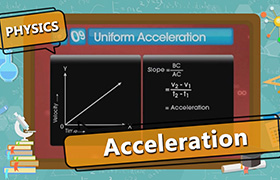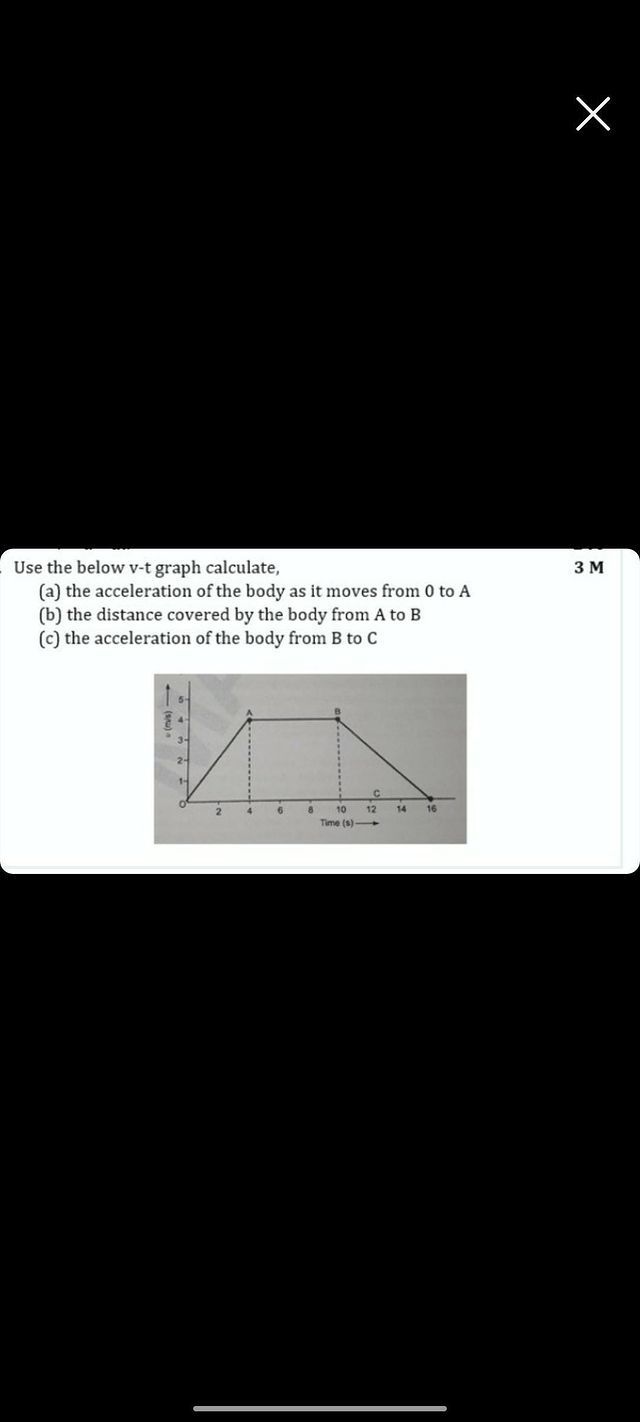CBSE Class 9 Answered
A force acts for 10 secs on a stationary body of mass 100kg after which the force ceases to act. The body moves through a distance of 100m in the next 5 secs. Calculate:-
i) the velocity acquiured by the body
ii) the acceleration producced by the force
iii) the magnitude of the force
Asked by atmojyotibarman7 | 30 Jul, 2021, 15:27: PM
Let us assume the body moves with constant velocity after the force cease to act
Velocity after the force cease to act = distance / time = 100 m / 5 s = 20 m/s
Velocity v after 10 second is 20 m/s and the body starts from rest , then acceleration a is determined from following equation
v = ( a × t )
acceleration a = v / t = 20 /10 = 2 m/s2
Force = mass × acceleration = 100 × 2 = 200 N
Answered by Thiyagarajan K | 30 Jul, 2021, 15:49: PM
Application Videos
Concept Videos
CBSE 9 - Physics
Asked by kempersi267k | 01 Jul, 2022, 18:36: PM
CBSE 9 - Physics
Asked by hd2583188 | 02 Jun, 2022, 05:04: AM
CBSE 9 - Physics
Asked by juhi.panchal | 05 May, 2022, 11:26: AM
CBSE 9 - Physics
Asked by grangerhermione951 | 02 Dec, 2021, 08:32: AM
CBSE 9 - Physics
Asked by psdarshan25082007 | 08 Sep, 2021, 20:14: PM
CBSE 9 - Physics
Asked by 2103030034 | 28 Aug, 2021, 15:06: PM
CBSE 9 - Physics
Asked by atmojyotibarman7 | 30 Jul, 2021, 15:27: PM
CBSE 9 - Physics
Asked by vikaashrajan11 | 28 Jul, 2021, 21:55: PM
CBSE 9 - Physics
Asked by jainpranav33047 | 20 Jul, 2021, 09:28: AM
CBSE 9 - Physics
Asked by ansh231206bhatia | 29 May, 2021, 15:42: PM







